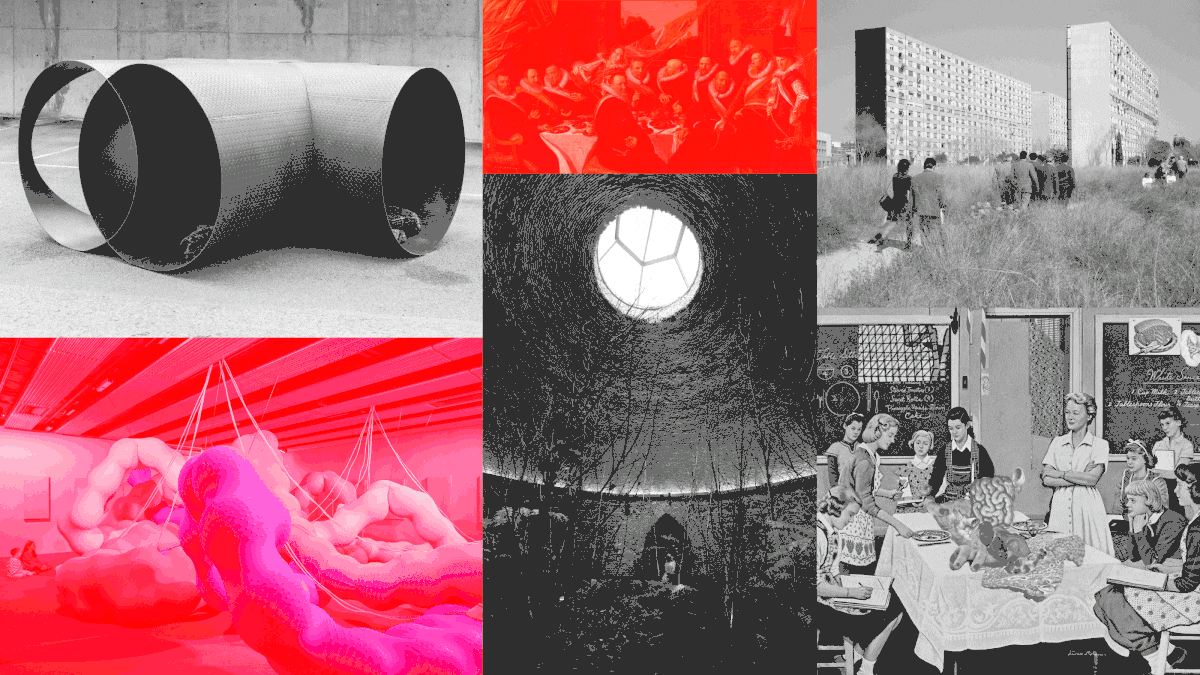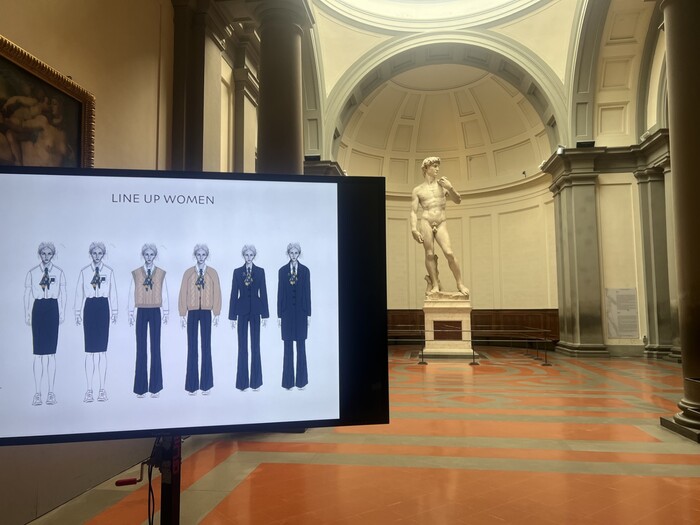Two visitors observe the painting 'Arquitectura II', by Lyonel Feininger.Fernando Alvarado / EFE
Wild coloring, chaos or beauty are some of the many words that would serve to define what expressionism meant, the movement that, in its different versions, developed in Germany during the first decades of the 20th century.
It was a way of understanding art that, like others, was described as degenerate by Hitler and which was particularly detested by Heinrich Thyssen (1875-1947), the initiator of a collection in which he always preferred ancient art to modern art.
For him, art ended in the 18th century.
However, there were two reasons why the heir to the family collection decided to turn to expressionism, in the opinion of Guillermo Solana, artistic director of the Thyssen.
The first was to
kill
his father, who had made him grow up with the greatest contempt for modern art.
And secondly, the entry of works repudiated by the Nazis served the baron well to clear the family name (his uncle Fritz was a follower and patron of Hitler).
In this desire to break with the past, Baron Han Heinrich Thyssen Bornemisza acquired an impressive collection of works that are part of the
German Expressionism
exhibition
,
which can be seen at the Madrid museum from today until March 14.
80 works are displayed, of which 44 come from the museum's collection, another 18 are owned by his widow, Carmen Thyssen, and are included in the temporary deposit pending resolution with the Government of Spain.
The rest have been loaned by Francesca and Alexander Thyssen, sons of the baron, which are exhibited under the Thyssen-Bornemisza Collections credit.
The exhibition replaces the one that the museum had planned to dedicate to Magritte, which has been postponed by the pandemic, and thus anticipates the tributes scheduled next year to celebrate the centenary of the baron's birth, on April 13, 2021.
Paloma Alarcó, head of Conservation of Modern Painting at Thyssen, has divided the tour into eight sections, in which she tries to reel off the type of collector that the baron was from the process of creating the paintings, his relationship with the dealers and the exhibition projects that he organized to disseminate his collection in the international context, until the sale of 775 works to the Spanish State in 1993 for 350 million dollars (296 million euros).
The walls of the exhibition rooms contain phrases pronounced or written by the baron, in which his collector eagerness is summarized and in which he talks about his personal relationship with each of the paintings that make up his collection.
"I felt a different spirit in this art, a spirit of freedom that totally broke with the academic tradition", can be read at the beginning of the tour.
Works by Ernst Ludwig Kirchner, Van Gogh, Edvard Munch are some of the references that the curator uses to take the viewer into the world of wild color and subjectivity that is later seen in oil paintings or watercolors by Paul Klee, Wassily Kandinsky or Karl Schmidt-Rottluff.
Generously represented is Emil Nolde, one of his favorite artists and "responsible" for the modern collection of the baron, since with the purchase of his watercolor
The Young Couple,
in 1961, Hans Heinrich Thyssen-Bornemisza started in Expressionism.
Alarcó points out that the interest of the baron was directed in the first place towards the works of the group Die Brücke (The Bridge), of Dresden, and later in the components of Der Blaue Reiter (The Blue Rider), active in Murnau and Munich, thus as in other expressionists.
"They all shared the same way of understanding art, which started from the inner vision of the artist and substituted the imitation of reality for the invention of a new reality", summarizes Alarcó.
The spectacularity of 'Metropolis'
The exhibition includes five paintings that were hung in German museums and were seized by the Nazis and later sold to raise funds for the war.
One of the most spectacular is
George Grosz's
Metropolis,
acquired in 1924 by the Kunsthalle in Mannheim and requisitioned in 1937 as "a tool of Marxist propaganda against military service."
It was one of the 6,000 that Nazism requisitioned.
The other confiscated pieces are
Summer Clouds,
by Nolde (it entered the Thyssen-Bornemisza collection in 1972),
Two female nudes in a landscape,
by Otto Mueller;
Horse Fair,
by Max Pechstein, and
Head of a Woman (Portrait of Siddi Heckel)
, by Erich Heckel.

/cloudfront-eu-central-1.images.arcpublishing.com/prisa/MQSTHLW62BAP5EWXWYVXNZTCRU.jpg)

/cloudfront-eu-central-1.images.arcpublishing.com/prisa/KXCDNWJR3VEUHHBRHIEWUQOTLU.jpg)
/cloudfront-eu-central-1.images.arcpublishing.com/prisa/EESVYF7UUJG25MJ3M57MB4ONFU.jpg)
/cloudfront-eu-central-1.images.arcpublishing.com/prisa/N2BE2XZPH66LPLH5V5X4WDOOHI.jpg)









